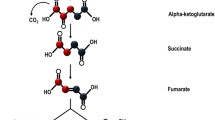Summary
Transport of palmitate from the albumin-palmitate complex in the plasma to inside mitochondria where it undergoes β-oxidation is a multistep process. Albumin's large size prevents permeation via interendothelial clefts. Palmitate dissociation from albumin in solution is too slow to provide an adequate supply of the unbound palmitate. The discovery that the dissociation occurs upon albumin binding to an endothelial surface receptor resolves the conundrum. Palmitate transport across the luminal surface membrane may be either carrier-mediated or passive. Fatty-acid binding protein inside endothelial and cardiac muscle cells facilitates diffusion through cytosol while maintaining the unbound palmitate concentration at a very low level. Within the interstitium, albumin is again the palmitate carrier. Still controversial is whether or not there is a saturable sarcolemmal transporter or simply passive exchange. Inside the myocyte palmitate is again bound to the fatty acid binding protein which buffers the free palmitate concentration, facilitates diffusion, and may facilitate further intracellular reactions.
Similar content being viewed by others
References
Van der Vusse GJ, Little SE, Bassingthwaighte JB: Transendothelial transport of arachidonic and palmitic acid in the isolated rabbit heart. J Mol Cell Cardiol 19 (Suppl. III): S100, 1987 (Abstr)
Svenson A, Holmer E, Andersson LO: A new method for the measurement of dissociation rates for complexes between small ligands and proteins as applied to the palmitate and bilirubin complexes with serum albumin. Biochim Biophys Acta 342: 54–59, 1974
Scheider W: The rate of access to the organic ligand-binding region of serum albumin is entropy controlled. Proc Natl Acad Sci USA 76: 2283–2287, 1979
Weisiger RA: Non-equilibrium drug binding and hepatic drug removal. In: J Tillemans and E Lindenbaum (eds) Protein Binding and Drug Transport. Schattauer Verlag, Stuttgart-New York, 1986, pp 293–310
Spector AA, Fletcher JE, Ashbrook JD: Analysis of longchain free fatty acid binding to bovine serum: albumin by determination of stepwise equilibrium constants. Biochemistry 10: 3229–3232, 1971
Wosilait WD, Soler-Argilaga C: A theoretical analysis of the multiple binding of palmitate by bovine serum albumin: the relationship to uptake of free fatty acids by tissues. Life Sci 17:159–166, 1975
Kuikka J, Levin M, Bassingthwaighte JB: Multiple tracer dilution estimates of D- and 2-deoxy-D-glucose uptake by the heart. Am J Physiol 250: H29-H42, 1986
Scow RO, Blanchette-Mackie EJ: Why fatty acids flow in cell membranes. Prog Lipid Res 24: 197–241, 1985
Brenner RR: Effect of unsaturated acids on membrane structure and enzyme kinetics. Prog Lipid Res 23: 69–96, 1984
Stein WD: Transport and Diffusion across Cell Membranes. Academic Press, Orlando, Florida, 1986
Saxton MJ: Lateral diffusion in an archipelago. Biophys J 52:989–997,1987
Glatz JFC, Janssen AM, Baerwaldt CCF, Veerkamp JH: Purification and characterization of fatty acid-binding proteins from rat heart and liver. Biochim Biophys Acta 837: 57–66, 1985
McCormack M, Brecher P: Effect of liver fatty acid binding protein on fatty acid movement between liposomes and rat liver microsomes. Biochem J 244: 717–723, 1987
Simionescu N, Simionescu M: Receptor-mediated transcytosis of albumin: Identification of albumin binding proteins in the plasma membrane of capillary endothelium. In: M Suchiya, M Asano, Y Mishima, M Oda (eds) Microcirculation. An Update. Proceedings of the Fourth World Congress for Microcirculation, Tokyo, Japan, July 26–30,1987. Excerpta Medica, Amsterdam, 1987, pp 67–82
Fournier NC, Rahim M: Control of energy production in the heart: a new function for fatty acid binding protein. Biochemistry 24: 2387–2396, 1985
Piper HM, Spahr R, Krutzfeldt A: Fatty acids are not a good oxidative substrate for microvascular coronary endothelial cell. In: 2nd International Symposium on Lipid Metabolism in the Normoxic and Ischemic Heart, 1988, p 40
Stremmel W: Fatty acid uptake by isolated rat heart myocytes represents a carrier-mediated transport process. J Clin Invest 81: 844–852, 1988
Hennecke T, Rose H, Kammermeier H: Is fatty acid uptake in cardiomyocytes determined by physicochemical FA partition between albumin and membranes? In: 2nd International Symposium on Lipid Metabolism in the Normoxic and Ischemic Heart, 1988, p 40
Murthy MSR, Pande SV: Malonyl-CoA binding site and the overt carnitine palmitoyl-transferase activity reside on the opposite sides of the outer mitochondrial membrane. Proc Natl Acad Sci 84: 378–382, 1987
Author information
Authors and Affiliations
Rights and permissions
About this article
Cite this article
Bassingthwaighte, J.B., Noodleman, L., van der Vusse, G. et al. Modeling of palmitate transport in the heart. Mol Cell Biochem 88, 51–58 (1989). https://doi.org/10.1007/BF00223423
Accepted:
Issue Date:
DOI: https://doi.org/10.1007/BF00223423




